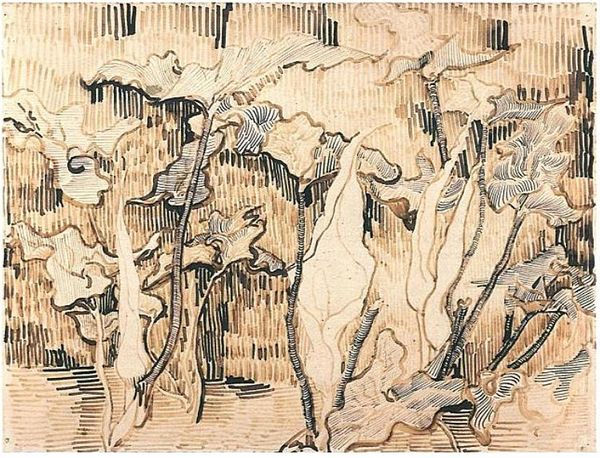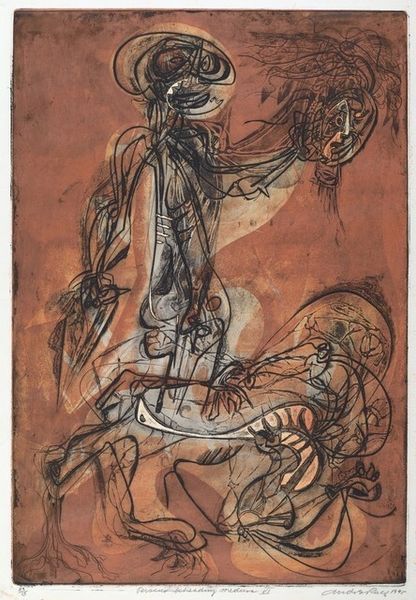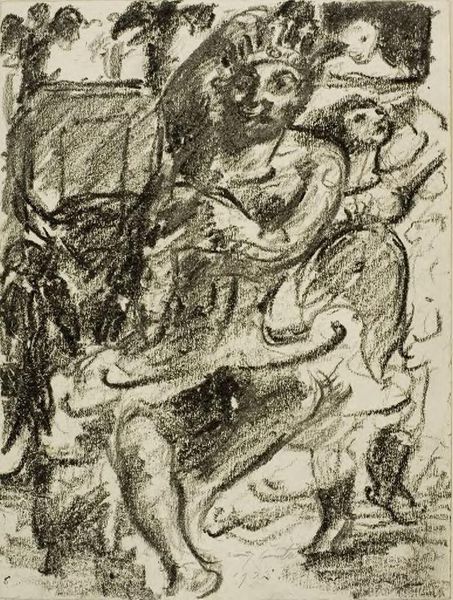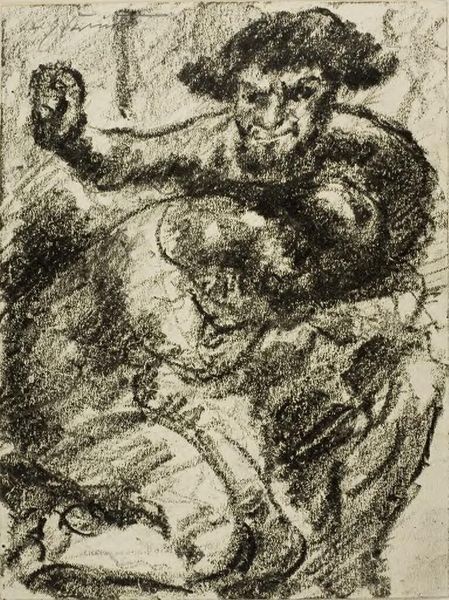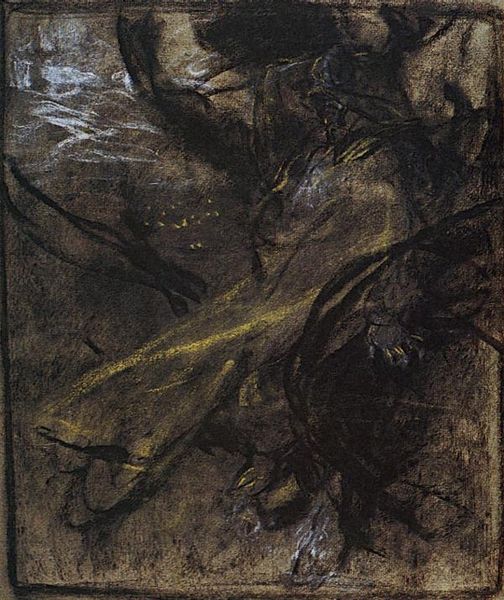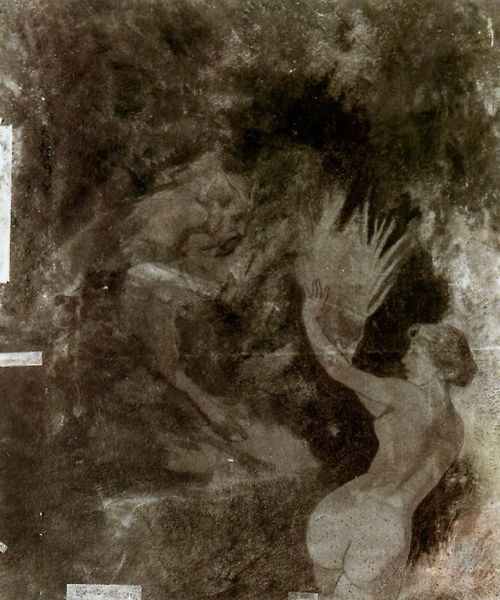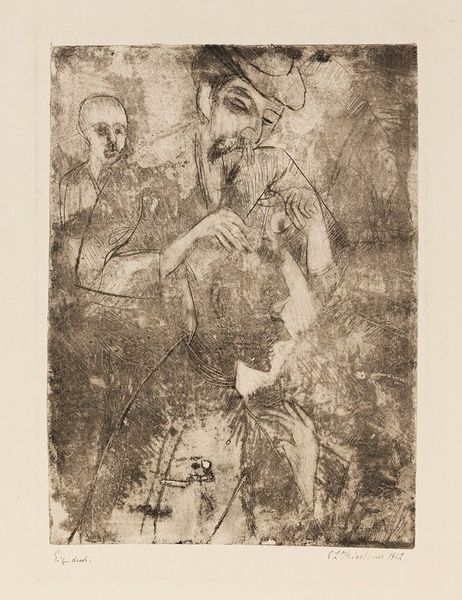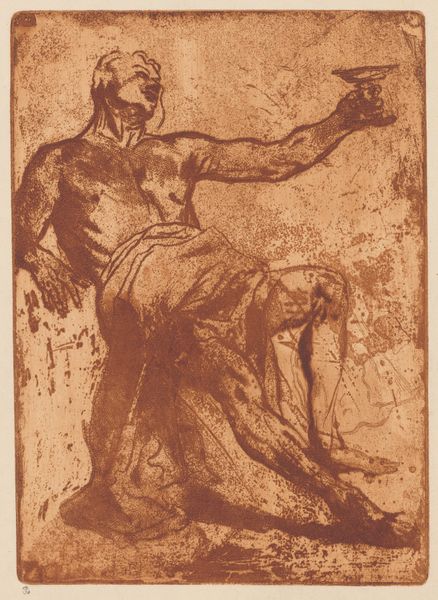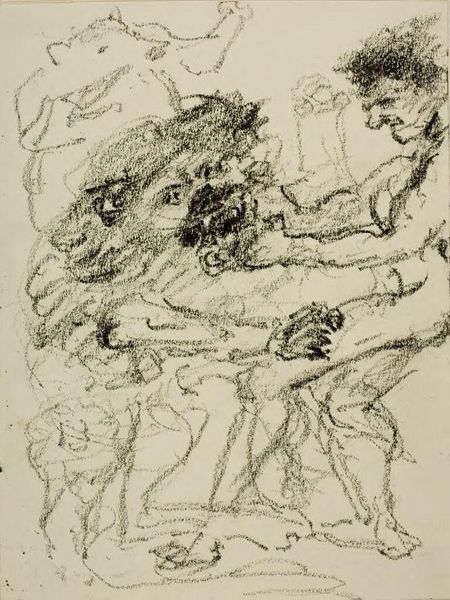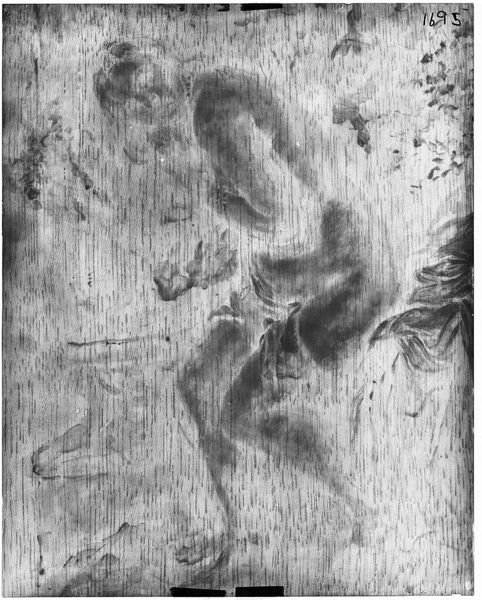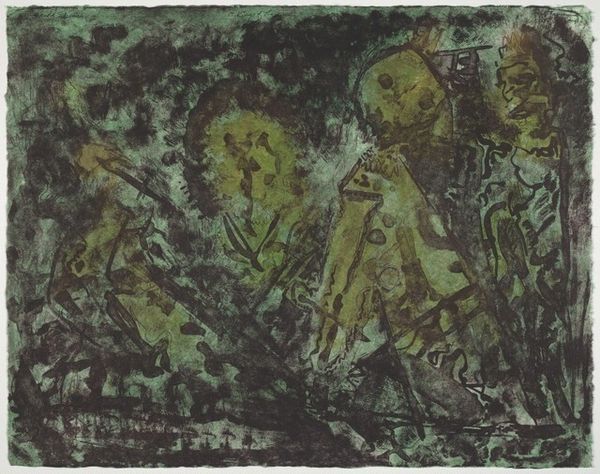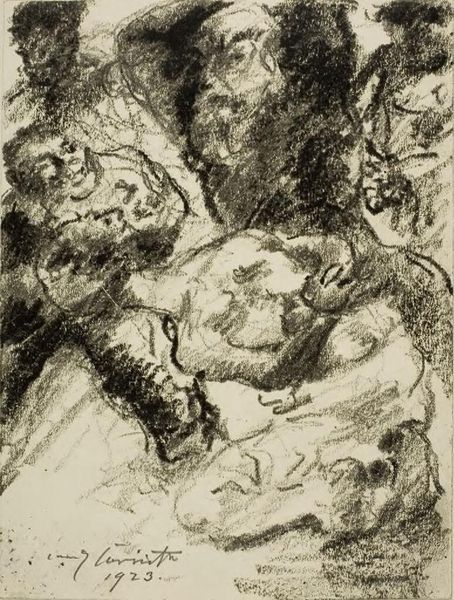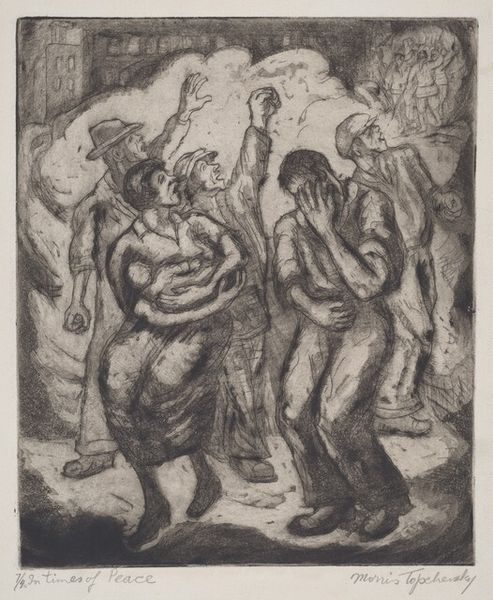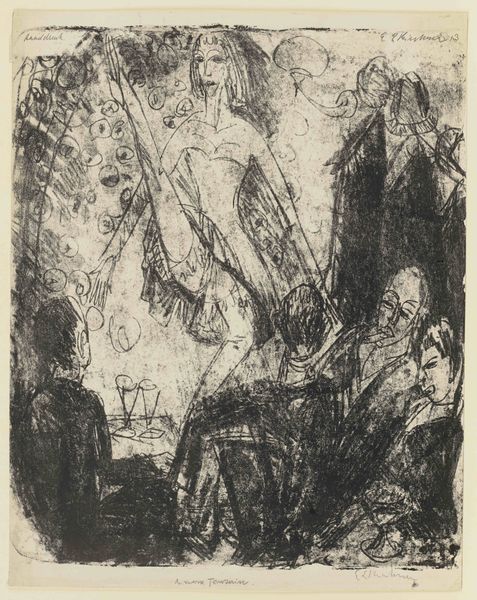
drawing, charcoal
#
portrait
#
drawing
#
art-nouveau
#
charcoal drawing
#
figuration
#
charcoal
Dimensions: 475 x 59 cm
Copyright: Public domain
Curator: My first impression is of something raw, almost primal. There's a vulnerability despite the intended subject. Editor: I see that too. We are standing before Alphonse Mucha’s “Wrestler,” created around 1900 using charcoal. Curator: The quick strokes create a fleeting image of strength and perhaps resilience? Wrestling has historically represented the fight between opposing forces: good and evil, order and chaos... What do you see first materially? Editor: The smudged charcoal certainly contributes to that impression of transience. It makes me think about the labor that went into wrestling—the repetitive actions of training and sparring—contrasted with the seeming ease and fleeting nature of art-nouveau style drawings made for quick consumption at the time. Mucha seems interested in the body’s performance. Curator: That's an insightful parallel. Mucha was adept at tapping into archetypes—think of his depictions of Salome—figures loaded with symbolic baggage. He’s doing something similar here. The obscured face evokes not just a person, but all people who have grappled with struggle. It seems universal because you cannot see his specific face or background, rendering it something much larger. Editor: True. But that generality also bothers me. Charcoal allowed for quick reproduction, which democratized image making, but also standardized representations of bodies. Where does individuality fit here? Does this image offer a stereotype of masculinity from this period? Is that his choice or driven by popular taste? Curator: That’s valid. Perhaps Mucha aimed for a balance, an iconic form rendered with a spontaneous technique? The smudging, I think, keeps it from being static or coldly generic. He blends cultural themes with quick strokes. I am wondering, with the high demand, what would he have considered his most personal work at the time versus his more commercial art. Editor: Perhaps the contrast is part of the point: the ephemeral nature of celebrity clashing with enduring ideals of physical strength and skill. Regardless, the charcoal seems appropriate—quick, economical, and able to deliver striking contrasts with minimal effort. It’s a pragmatic medium, mirroring the tough realities of professional sport at the time. Curator: Yes, exactly. A testament to turning struggle into something beautiful—however fleeting. Editor: An economical dance between artist and subject, wrestling for lasting representation.
Comments
No comments
Be the first to comment and join the conversation on the ultimate creative platform.
